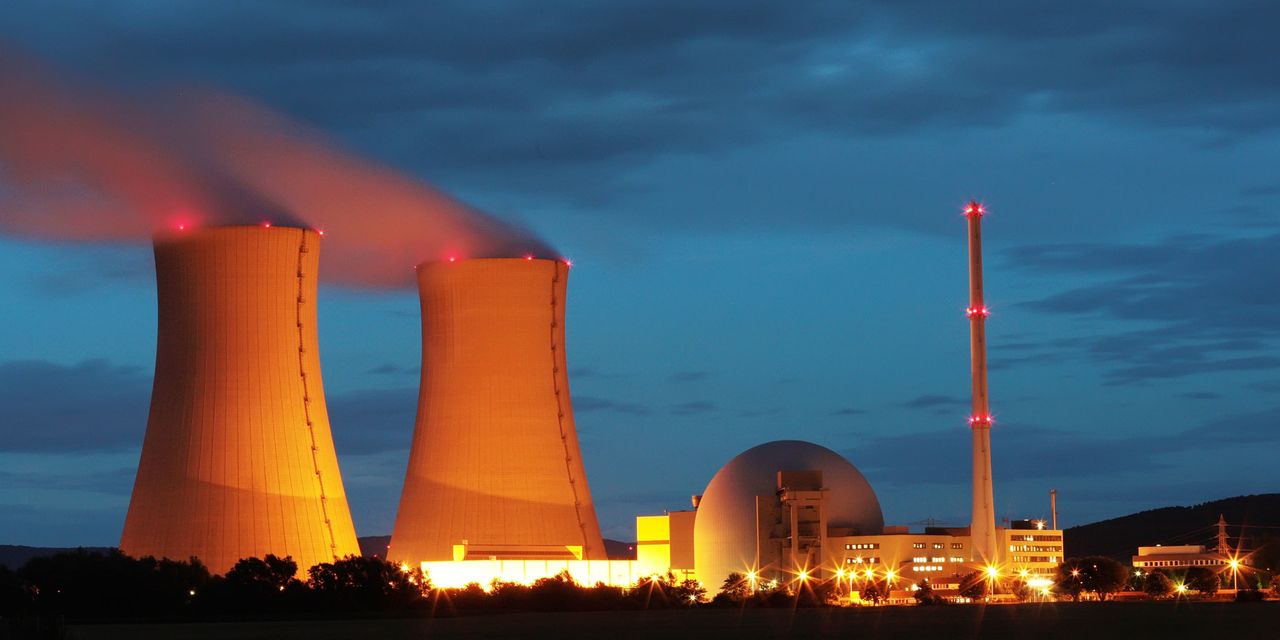
Investors have embraced once-niche alternative-energy sources including solar, wind and geothermal as governments crack down on polluting and poisonous fossil fuels.
But what’s often avoided is any discussion of a reliable, carbon-free source that can scale more than any other alternative form of energy: nuclear.
Sustainable-minded investors have had an uneasy relationship with nuclear energy. Significant downsides abound: the high costs and long time spans to build plants and handling spent fuel (nuclear waste), and the potential for proliferation.
Bill Gates, Warren Buffett
However, in a time of climate triage, nuclear energy is getting a renewed look. The best-known example is Bill Gates’ advanced nuclear reactor company TerraPower, which teamed up with GE-Hitachi Nuclear Energy and Berkshire Hathaway’s BRK.B, +0.84% power company, PacifiCorp, to eventually build a next-generation small nuclear reactor using new fuel technology.
Further, as the world economy struggles to rebound following last year’s lockdowns, upending traditional energy supplies and a transition to renewable energy, nuclear advocates may use this time to push it as a baseload source of clean power that can work in harmony with wind and solar energy, and as an alternative to carbon-emitting natural gas that’s often bundled with renewables.
High-profile summit
Using nuclear energy to advance the goals of the Paris Agreement is likely to be discussed at the UN Climate Change Conference, known as the COP26 Summit, starting Oct. 31 in Scotland. In its report, the Intergovernmental Panel on Climate Change earlier this year said nuclear has “the potential for an expanded role as a cost-effective mitigation option,” but can cause “great problems” if the downsides aren’t handled carefully.
Those “great problems” are the hurdles that nuclear faces, but new nuclear technologies are trying to address some of those issues.
Smaller, safer reactors
Alex Gilbert, project manager at Nuclear Innovation Alliance, which supports commercialization of advanced nuclear energy systems, says the new designs are a fraction of the size of a conventional nuclear plant and use significantly less fuel.
Gates’ TerraPower’s reactor would produce about 345 megawatts of thermal power. Micro reactors, similar to the module that nuclear company X-energy is planning for the Department of Defense, are small enough to put on a semi-trailer and produces 10 megawatts (MW) or less and are about the size of a wind turbine.
Comparatively, Exelon’s EXC, +0.47% recently relicensed Braidwood Generating Station’s two-unit nuclear power station in Illinois generates 2,389 megawatts of power.
TerraPower and X-energy’s projects are under an advance reactor demonstration program, Gilbert says, and could possibly be online in 2029 or 2030. A third advanced reactor, from NuScale, with about 250 MW, may be ready around that time, too. Those would be three companies producing power at a utility level.
But the first to market may be a 4 MW micro reactor by Oklo. The U.S. Nuclear Regulatory Commission is reviewing it now. Because of its small size, if approved, it could be built and go online as soon as 2025, Gilbert says.
The new designs of advanced reactors could more easily work with renewable energy on the electric grid, he says, noting different systems have different strategies. TerraPower has a molten-salt integrated storage system where the plant’s output can balance with the grid, while NuScale has multiple modules that can be turned on or off as needed.
Gilbert says these advanced reactors use fuel more efficiently and use much less of it. One of the fuel types being discussed is high-assay low-enriched uranium, which allows these new reactors to use up to 20% of uranium 235, the isotope that produces energy during a chain reaction, and get more power. Conventional reactors use only 5%. This design makes spent fuel less radioactive in the short- and long-term versus conventional reactors
“That means that the amount of waste that you’re producing volumetrically can potentially be a lot lower,” Gilbert says.
This type of uranium is being used in Triso fuel that some of the new designs use. Triso has a small amount of uranium surrounded by silicon and carbon-based materials and acts as a containment vessel itself. That coating makes it extremely difficult to be used in proliferation, too.
Another key difference is many of the newer systems are designed to shut down automatically with the need for human activity to ensure safety, which was one of the problems with Japan’s Fukushima, which had failures with its active systems.
Sustainability issues
Peter McNally, global sector lead for industrials materials and energy at Third Bridge, says that for some ESG (environmental, social and governance) investors, nuclear power is out of the question. However, he also points to the turmoil in the fossil-fuel energy markets as creating a security issue in itself.
“The security of fuel sources has become a key issue, as energy and power crises have gone global,” he says. “On that metric, nuclear power’s track record over the past decade has been excellent. Finally, with respect to its carbon credentials, nuclear competes with every low- and no-carbon source available.”
Garvin Jabusch, chief investment officer of Green Alpha Advisors, whose firm manages sustainable portfolios, acknowledges how divided sustainability investors are over nuclear and the need to decarbonize, adding that he isn’t completely against nuclear energy.
“I think the existing nuclear reactors should be allowed to run out their lifespans, because they’re there anyway,” he says, since they do produce carbon-free energy.
‘Deadly to life’
But he doesn’t think it’s good idea to build new ones, even with advanced designs, citing the common concerns with nuclear: spent fuel storage, potential for proliferation and costs.
“Sustainability encompasses more than just greenhouse gas emissions. Let’s not forget that these things require fuel that is deadly to life,” he says.
There are some advanced nuclear reactors that are looking to use spent fuel in their designs, and Jarbusch says that’s something he’d be interested in. “That would be a great way to both eliminate the waste of the existing stockpiles and generate a bunch of zero-carbon energy,” he says.
Regulations, funding
Regulatory updates may encourage ESG investors. Barclays says the EU taxonomy for sustainable activities, a classification system Europeans are developing, could bring “more clarity on nuclear’s role in the green transition, which may help build a stronger consensus among investors still unsure about the nuclear power sector from an ESG perspective.”
David Yurman, a nuclear-industry observer who blogs under Neutron Bytes, says the industry could use financing from ESG investors wanting to support carbon-free energy, but he’s not sure the industry is ready for these investors’ scrutiny.
“The biggest concern that these companies are going to have with ESG investors is verifying the data that they collected for their ESG reports,” he says. “Investors will say, ‘How do I know your data is any good?’”
The companies also face a stumbling block common for any small, private enterprise: Being able to do the extra due diligence that’s required by many ESG investors, Yurman says.
“They are just head over tea kettle to get the next round of funding, to get the product developed, to get through the regulatory burdens. ESG reporting is just not going to rise to the level of attention that it probably needs, at least not now. But it may in the future,” he says.





